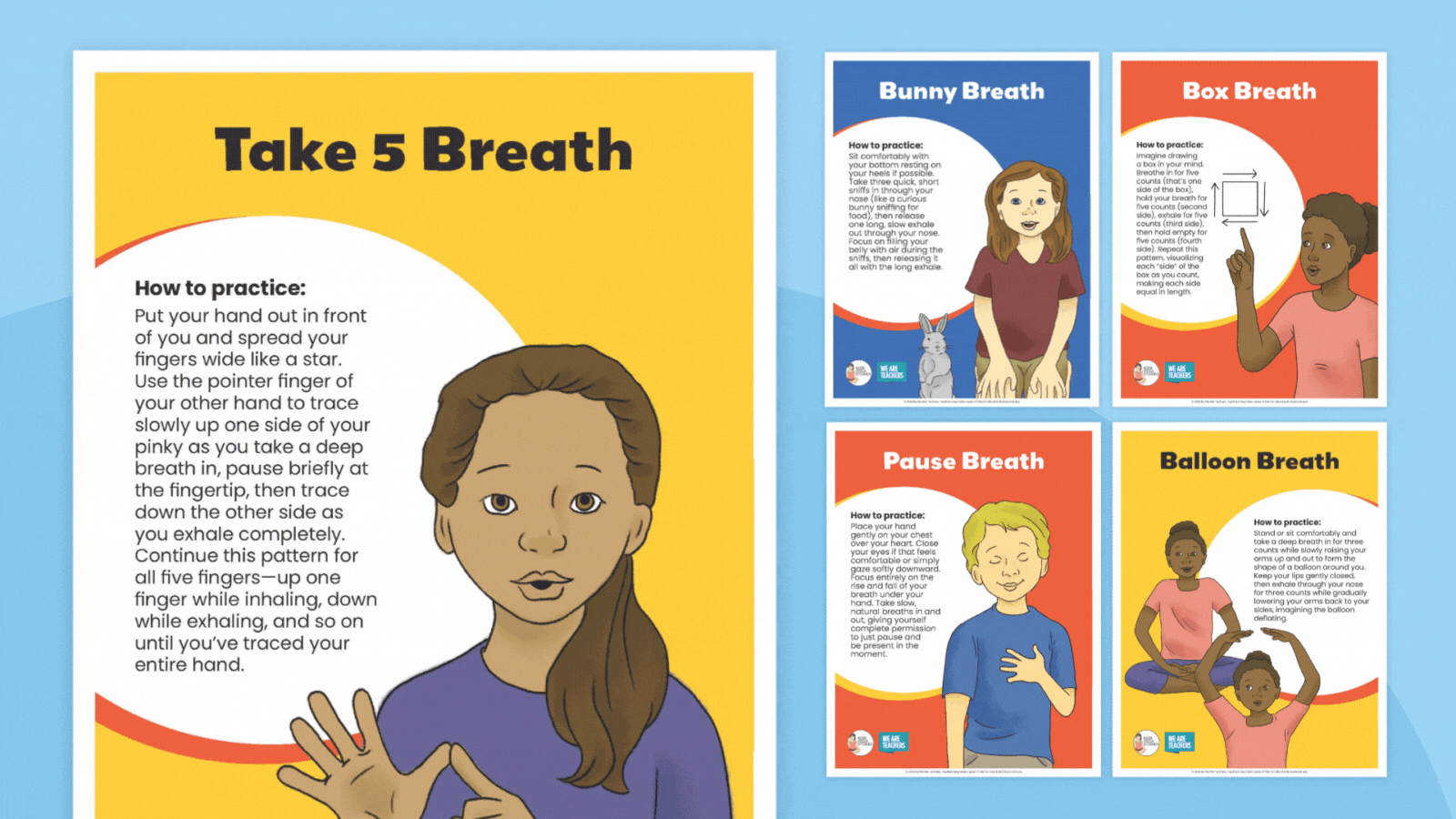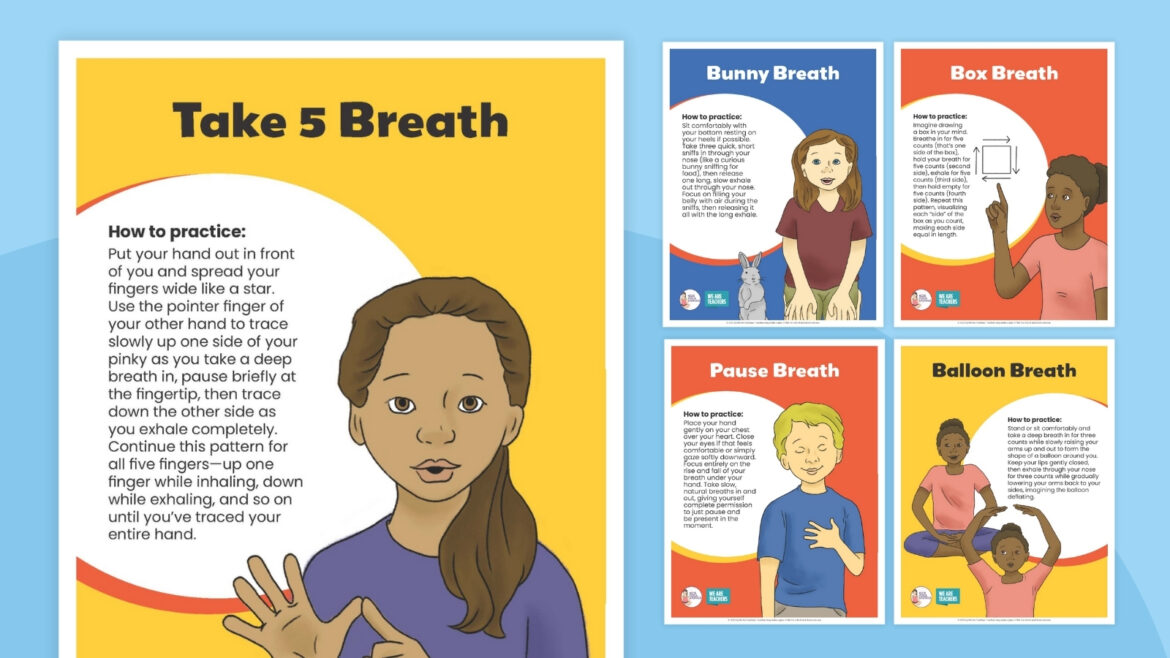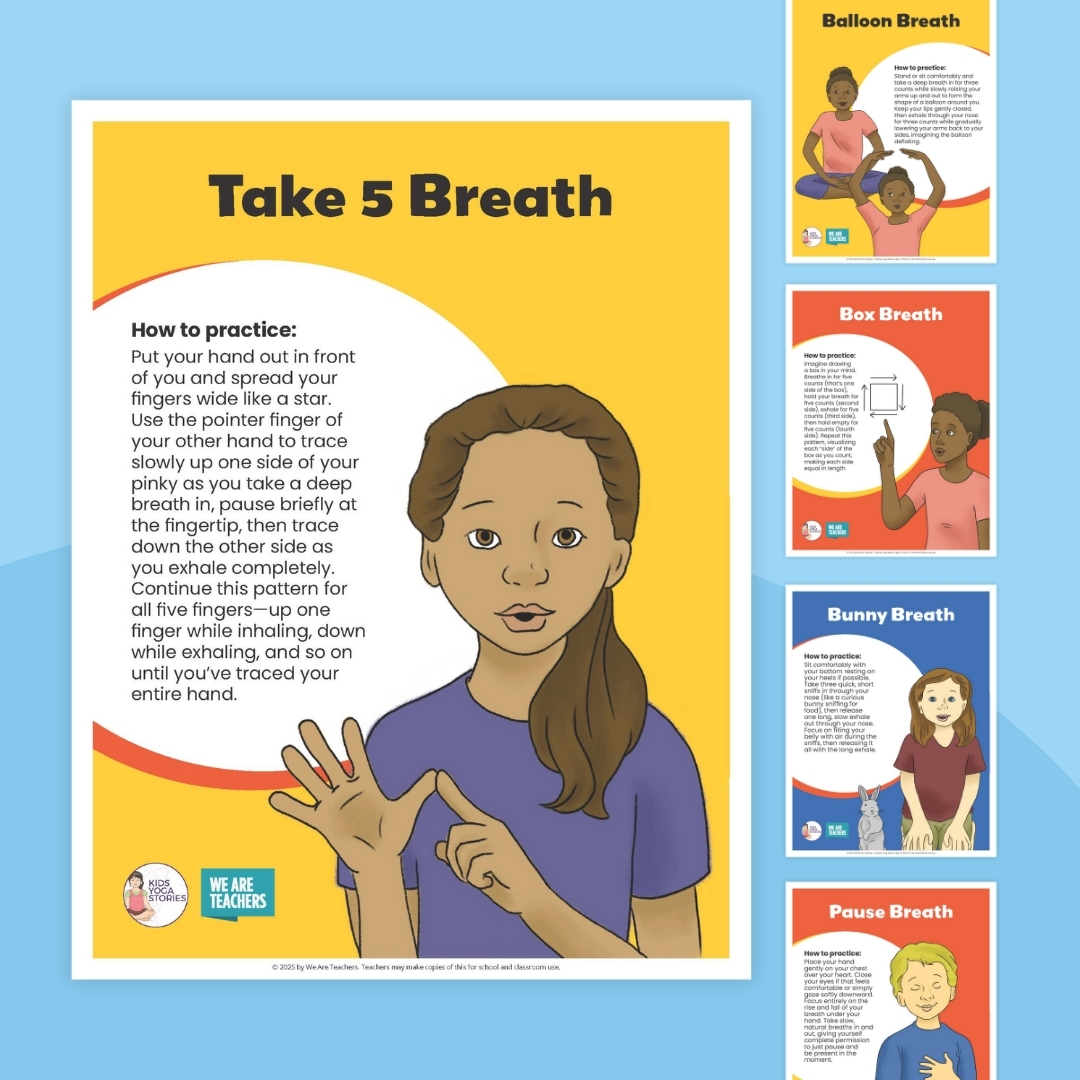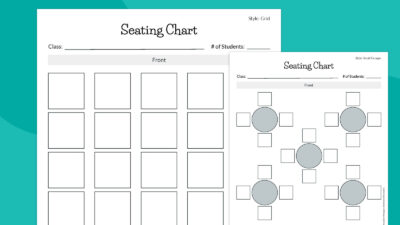I’m subbing in a 4th-and-5th-grade classroom, and one student’s ODD is completely disregulating the entire room. His energy is contagious in the worst possible way. Boys are ricocheting off the walls like pinballs, girls are throwing sass and attitude at anyone who looks their way, and that familiar wildfire feeling is spreading through the room. You know exactly what I mean: that moment when one child’s big emotions pull everyone else into the storm.
I can feel my own anger surging from my belly—that hot mix of shame, embarrassment, and genuine panic.
My mind is racing. Thoughts come rapid-fire, one panic-inducing question after another:
- How can I possibly connect with this child and help him settle?
- How can this class have such power over me?
- What if the principal walks by right now?
- What if a student tells their parents about this disaster?
- Is someone going to get hurt?
It’s that sinking feeling when you realize you’re not managing the classroom—the classroom is managing you.
But then I did something that surprised even me.
I placed my hand on my heart and took a few deep breaths, right there in front of everyone. Some of the upset students naturally started following along, helping to get others involved too. That moment reminded me of something crucial: Teachers are human too, and we desperately need time for ourselves to reset.
The value of leaning in (instead of stepping out)
We’ve all been there. You’re exhausted, the class is spiraling, so you pull up GoNoodle or another video and step back to catch your breath. I totally get it! They are fantastic resources, and honestly, we need those moments—moments to catch our breath.
But there’s a missed opportunity here: By stepping back instead of stepping in, we miss how participation alongside students changes everything. You’re not just modeling emotional regulation (though that’s huge), you’re actually getting the personal benefits yourself. Think calming that rising anger, pausing before you react, soothing your nervous system, and taking a quick brain break.
This is the science of co-regulation at work. When you place your hand on your heart while breathing, you’re activating your parasympathetic nervous system beyond what breath alone can do—literally creating moments where you can respond instead of react. Meanwhile, students are witnessing what authentic self-compassion looks like in real time. We can’t always control our students’ behavior, but we can absolutely control our part in creating calm together.
Dr. Ross Greene’s philosophy that “kids do well if they can” reminds us that all behavior is communication. His research shows that challenging behavior stems from lagging skills in areas like frustration tolerance and emotion regulation.
Often what children are trying to communicate through their behavior is their need for co-regulation with a calm, grounded adult. When we authentically participate in these breathing exercises, we’re providing exactly that while taking care of our own nervous systems too.
5 Breathing Exercises for a Complete Classroom Energy Reset
Here are five breathing exercises you can practice with your students starting tomorrow to create those powerful moments of shared calm when your classroom needs it most.
Each technique supports CASEL’s five core competencies—self-awareness, self-management, responsible decision-making, relationship skills, and social awareness—building the emotional foundation students need for both academic success and lifelong well-being.
1. Take 5 Breath
How to practice:
Put your hand out in front of you and spread your fingers wide like a star. Use the pointer finger of your other hand to trace slowly up one side of your pinky as you take a deep breath in, pause briefly at the fingertip, then trace down the other side as you exhale completely. Continue this pattern for all five fingers—up one finger while inhaling, down while exhaling, and so on until you’ve traced your entire hand.
Teacher benefits:
This is a quick reset tool for overwhelming moments that provides a discreet way to ground yourself during the chaos.
Student benefits:
A concrete, easy-to-remember technique with a tactile element helps students focus and provides grounding.
CASEL connection:
This practice builds self-awareness by helping you recognize your stress signals in the moment. It also promotes self-management skills as you use the physical touch and counting to regulate your nervous system.
“When you’re stressed out, you can do a breath. And when you’re mad, you can always calm yourself with your breath.”
—Elifsu
2. Box Breath
How to practice:
Imagine drawing a box in your mind. Breathe in for five counts (that’s one side of the box), hold your breath for five counts (second side), exhale for five counts (third side), then hold empty for five counts (fourth side). Repeat this pattern, visualizing each “side” of the box as you count, making each side equal in length.
Teacher benefits:
The Box Breath helps center your attention when feeling mentally scattered and provides structure when everything feels out of control.
Student benefits:
It builds serious concentration skills and gives older students a sophisticated technique they can use independently.
CASEL connection:
This breathing pattern strengthens self-management by training your ability to control attention and focus, while also supporting responsible decision-making through the practice of pausing before reacting.
“Breathing can help put you more in the moment. … If your brain’s constantly going in 10 different directions, it’s really hard to focus.”
—Sarah
3. Bunny Breath
How to practice:
Sit comfortably with your bottom resting on your heels if possible. Take three quick, short sniffs in through your nose (like a curious bunny sniffing for food), then release one long, slow exhale out through your nose. Focus on filling your belly with air during the sniffs, then releasing it all with the long exhale.
Teacher benefits:
This energizing yet calming belly breathing refreshes, resets, and provides a quick energy boost when you’re feeling drained.
Student benefits:
The playful animal connection makes it engaging for younger students, while older students benefit from the deep belly breathing.
CASEL connection:
This breathing technique enhances self-awareness by connecting you with body sensations and breath patterns, while fostering relationship skills through the shared, playful experience that builds classroom community.
“It feels really nice because you’re calming your body. Your heart will start beating slower. So that means you’re gonna come to rest.”
—Emalie
4. Balloon Breath
How to practice:
Stand or sit comfortably and take a deep breath in for three counts while slowly raising your arms up and out to form the shape of a balloon around you. Keep your lips gently closed, then exhale through your nose for three counts while gradually lowering your arms back to your sides, imagining the balloon deflating.
Teacher benefits:
This breathing technique creates mental space when you’re feeling crowded or overwhelmed by work demands and helps establish energetic boundaries.
Student benefits:
The visual element helps with focus while teaching personal space awareness and boundaries in a concrete way.
CASEL connection:
This exercise develops social awareness by helping you understand personal space needs—both your own and others’—while building self-management skills through creating healthy mental and physical boundaries.
“When you’re frustrated about something and you don’t have anything to calm you down, you can just take a deep breath and maybe calm yourself down and feel better.”
—Aybike
5. Pause Breath
How to practice:
Place your hand gently on your chest over your heart. Close your eyes if that feels comfortable or simply gaze softly downward. Focus entirely on the rise and fall of your breath under your hand. Take slow, natural breaths in and out, giving yourself complete permission to just pause and be present in the moment.
Teacher benefits:
This is your emergency brake for rising emotions! It creates instant space between the trigger and response.
Student benefits:
It helps students mentally prepare for transitions and teaches them it’s OK to take a moment when feeling overwhelmed.
CASEL connection:
This practice develops self-awareness by helping you recognize emotional triggers as they arise, while building relationship skills through creating the mental space needed for better interactions with others.
“Taking a breath during our busy days gives our minds and bodies a moment to pause, so we can reset, make thoughtful choices, and come back to the present moment.”
—Giselle
How to weave breath into your day (without adding more to your plate)
The real magic happens when these practices become organic parts of your day rather than scheduled “breathing time.” Try them before tests when everyone’s nervous, after recess when the energy is wild, during transitions when attention is scattered, or in those tense moments when you feel your patience wearing thin.
Read the room and trust your instincts. Sometimes your class needs the playful Bunny Breath to reenergize, other times they need the grounding Take 5 Breath when emotions are running high. Give yourself permission to start small—even 30 seconds of breathing together can shift the entire energy of your classroom.
Look, some days are still going to be hard!
These aren’t magic fixes for the daily emotional toll of teaching—the frustration, exhaustion, and those moments when you feel like you’re failing when nothing seems to work.
But here’s what I know: These simple breaths are as much for you as they are for your students, especially in those moments when you feel your chest tightening or your patience running thin.
You’re not white-knuckling it alone anymore. You’re giving yourself permission to be human while showing kids what it actually looks like to take care of yourself. Some days will still be tough, but having these in your back pocket means you’re choosing to breathe through it rather than just survive it.
Try one tomorrow when you feel that familiar stress creeping up—not because you have to, but because you deserve to feel calmer too.
Get your free 5 Breathing Exercises Poster Bundle!

Download your free 5 Breathing Exercises Poster Bundle for kids to help reset your classroom energy! Just click the button below to grab them.




